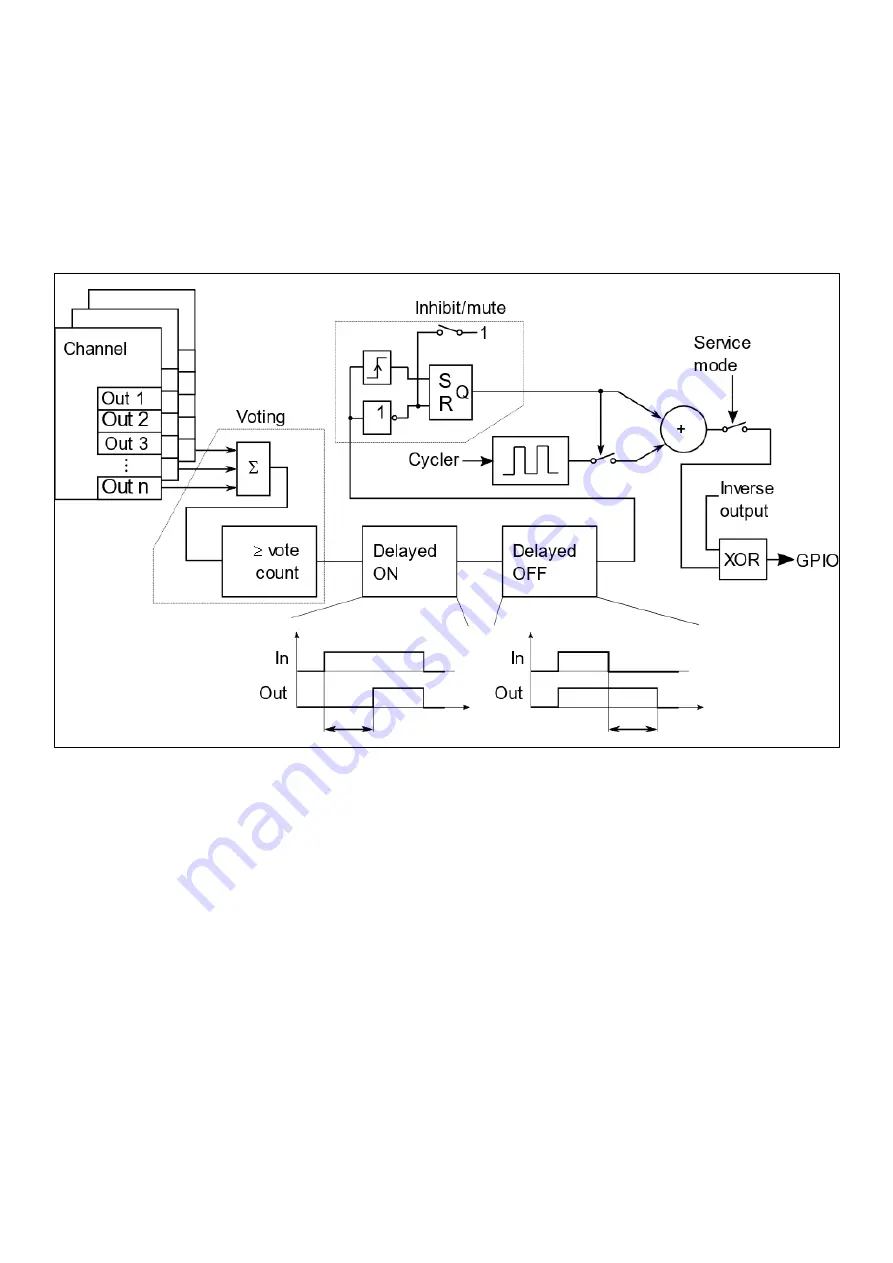
37
6.5.2
Digital outputs
The following figure describes how to control and function the digital outputs. The output of requests for switching the output
from individual channels is introduced into the voting block. If the number of requests is higher than the set voting limit for
the output, the request continues to the cascade of delayed-on and delayed-off blocks. This is followed by an RS flip-flop,
which is used for the alarm inhibition function on the output - the current alarm can be deactivated, but each subsequent
alarm activates the output again. Another function is a cycler, which allows the output to generate pulses instead of
permanent switching. The last function at the level of the IO pin is the function of output negation - rotation of the output
logic, when at rest the output is closed and in case of an alarm it opens.
Figure 26 Block diagram of the output connection
















































